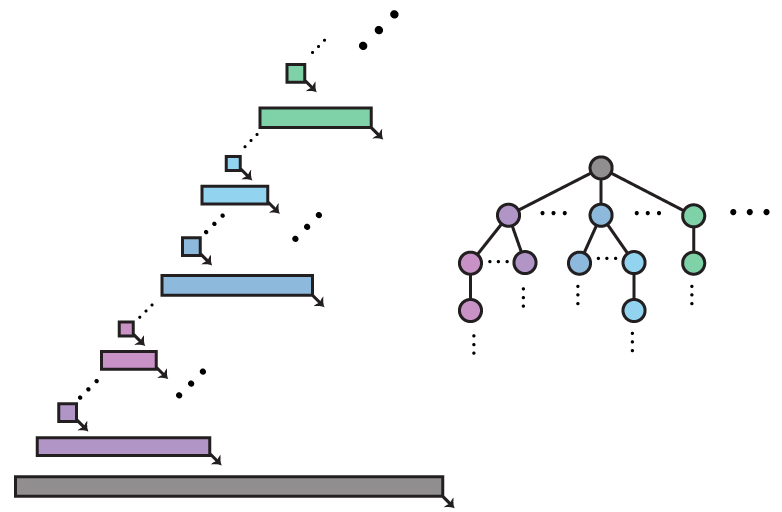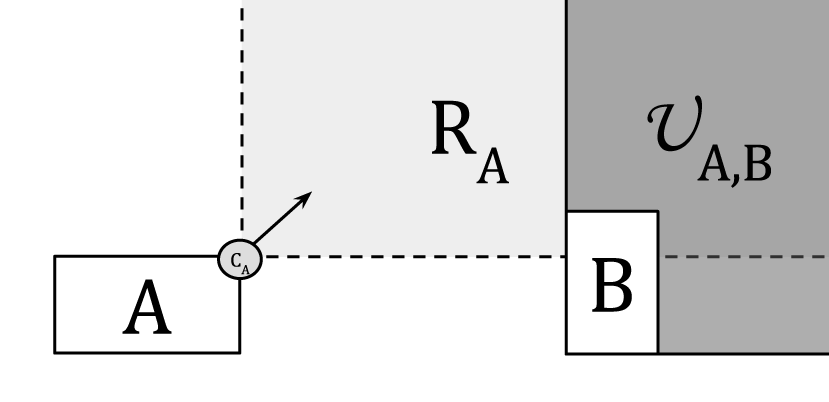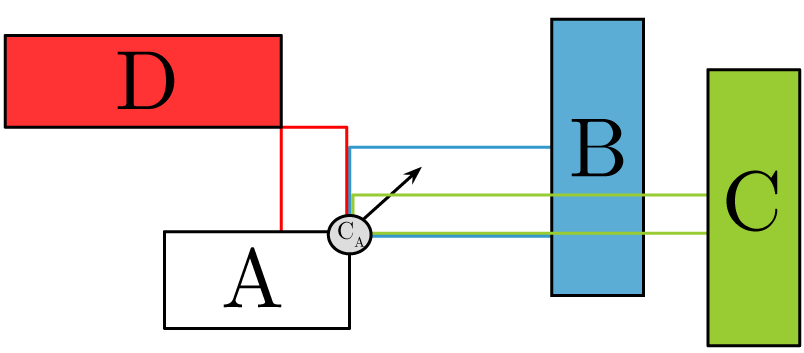Corner Rectangle Visibility Graphs

Abstract
Corner rectangle visibility graphs (CRVGs) combine two existing lines of inquiry in graph theory: rectangle visibility graphs (RVGs) and rectangle-of-influence graphs (RIGs). An RVG uses vertical and horizontal bands of sight between axis-parallel rectangles in the plane to construct a graph whose vertices and edges correspond to rectangles and visibility bands respectively. RIGs are a straight-line embedding of a graph, where edges can be represented as empty axis-parallel rectangles of influence with adjacent vertices at opposing corners of the RI.
We define CRVGs by giving each rectangle a single eye in its corner and defining visibility relations accordingly. We prove that families of graphs, including paths, cycles, wheels, trees, \(k\)-partite graphs up to \(k=4\), and complete graphs \(K_n\) for \(n \leq 5\) are representable by corner rectangle diagrams.
Our work further analyzes the maximum number of edges \(e\) that can be drawn in restricted CRVG representations: (1) where all rectangles look the same direction (SCRVGs), \(e=\left[\frac{n^2}{4}\right]+n-2\); and (2) where all rectangles look in orthogonal directions (SWCRVGs), \(e=\left[\frac{n^2}{3}+\frac{n}{3}\right]-1\).

Full Text
Find the full text of the paper, written by myself, Lani Southern, and Jayden Li, supervised by Professor Josh Laison, in this PDF.

Presentation
We gave an oral presentation of this research at Willamette University’s Student Scholarship Recognition Day and at a Willamette University Mathematics Colloquium. You can browse our slide deck here.